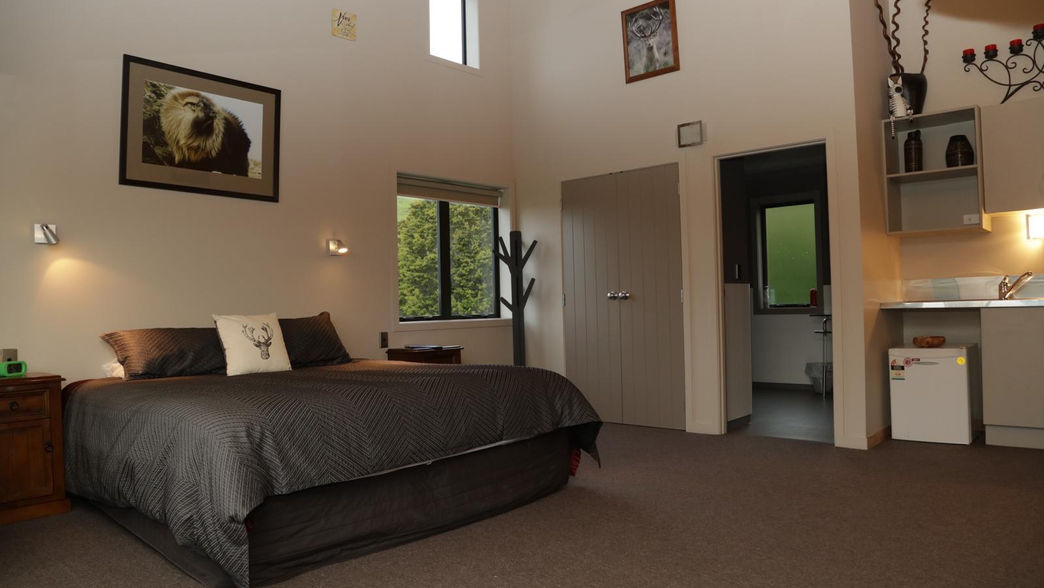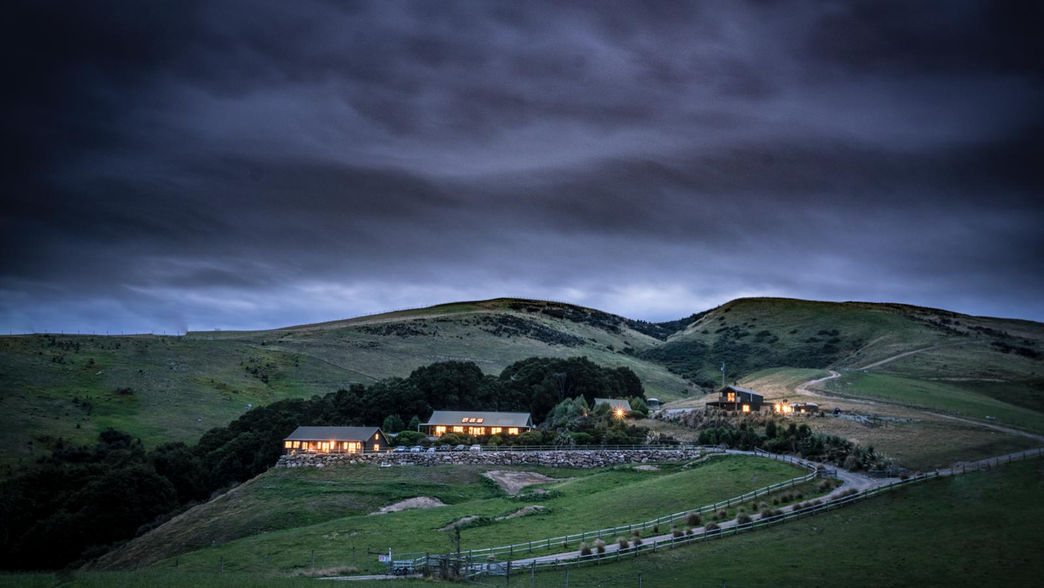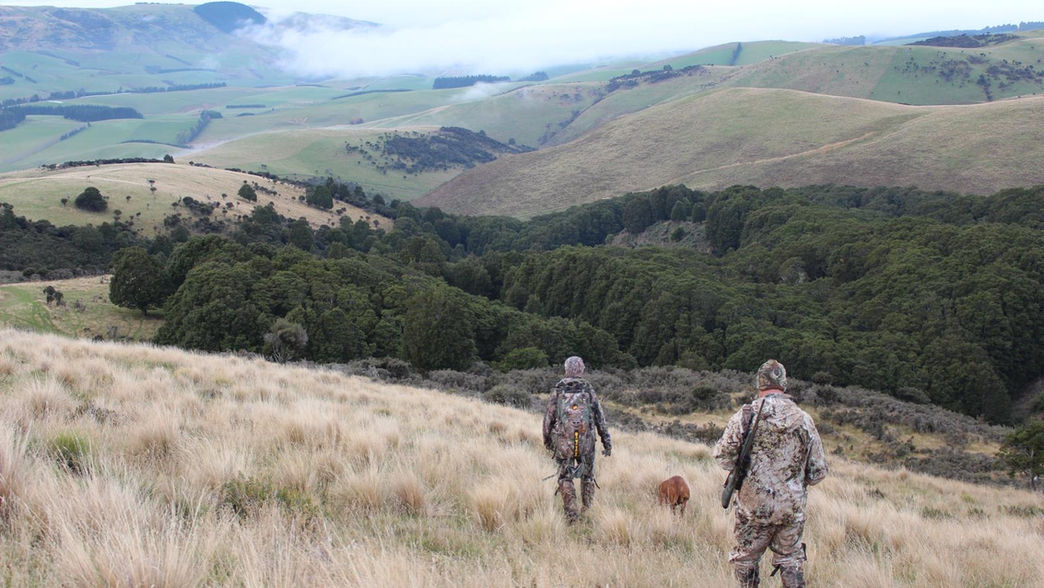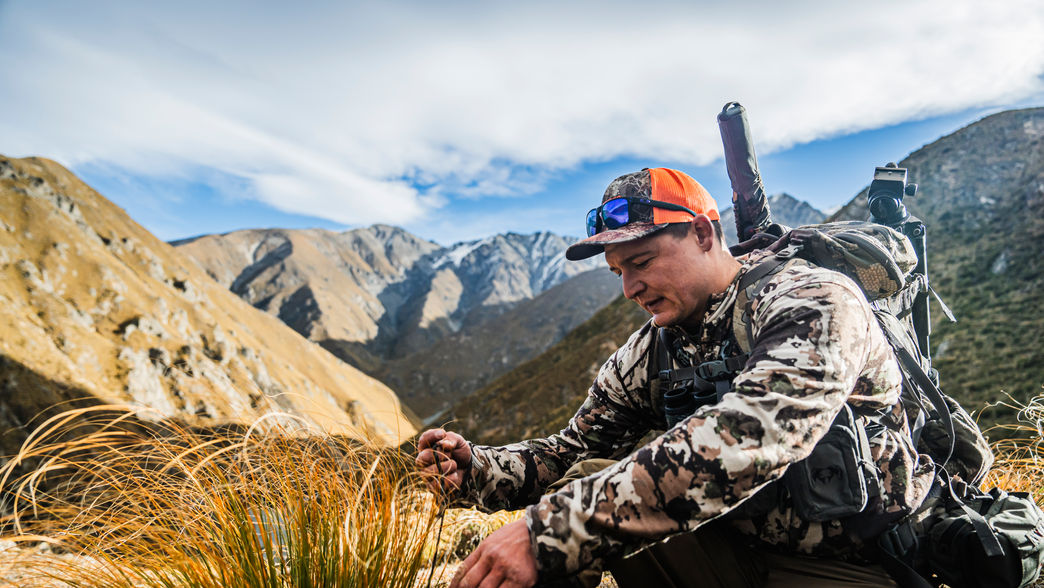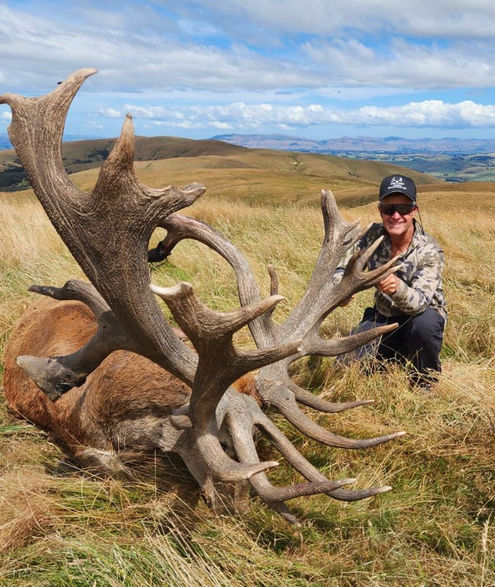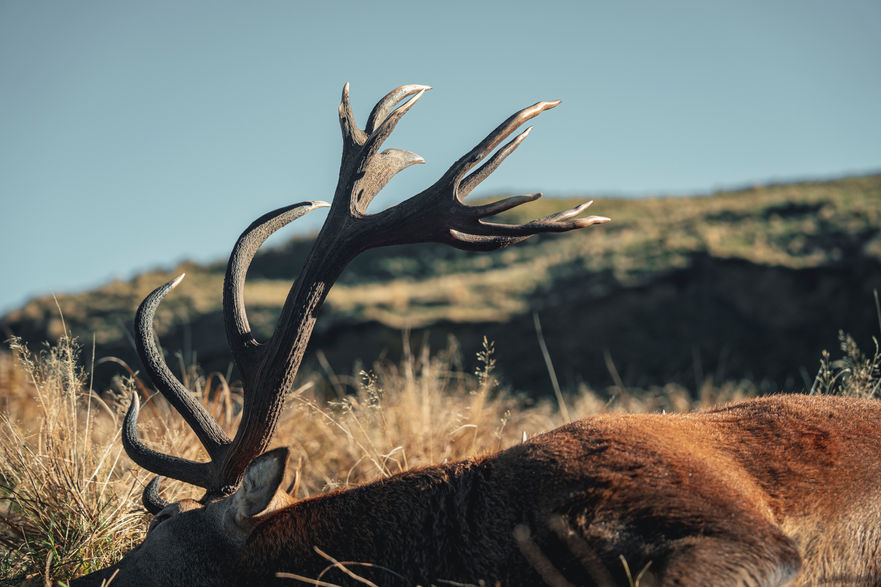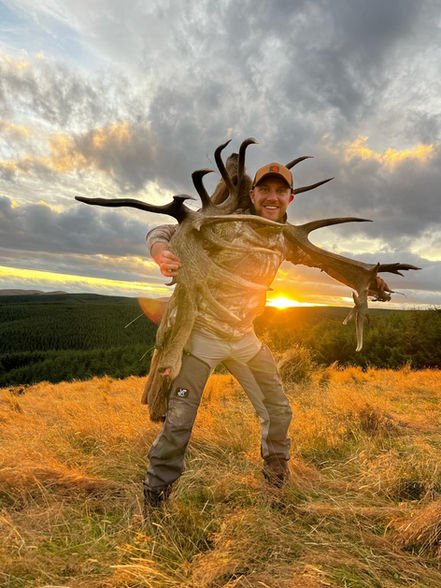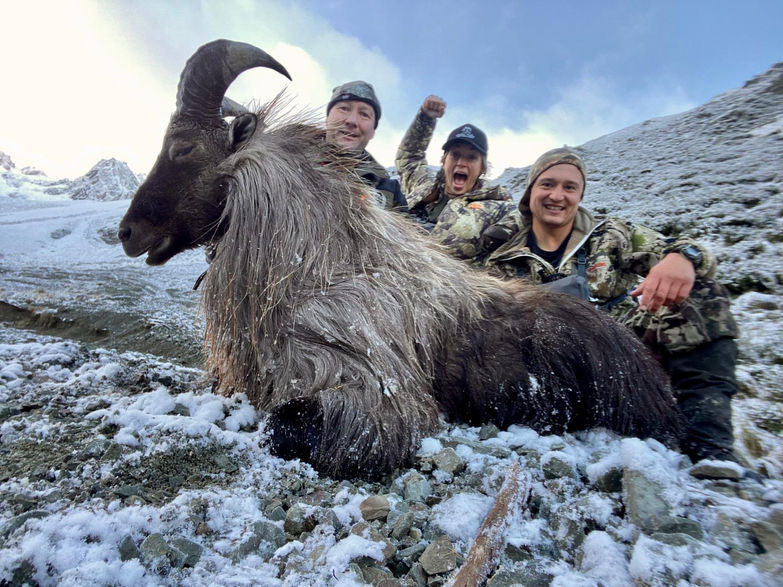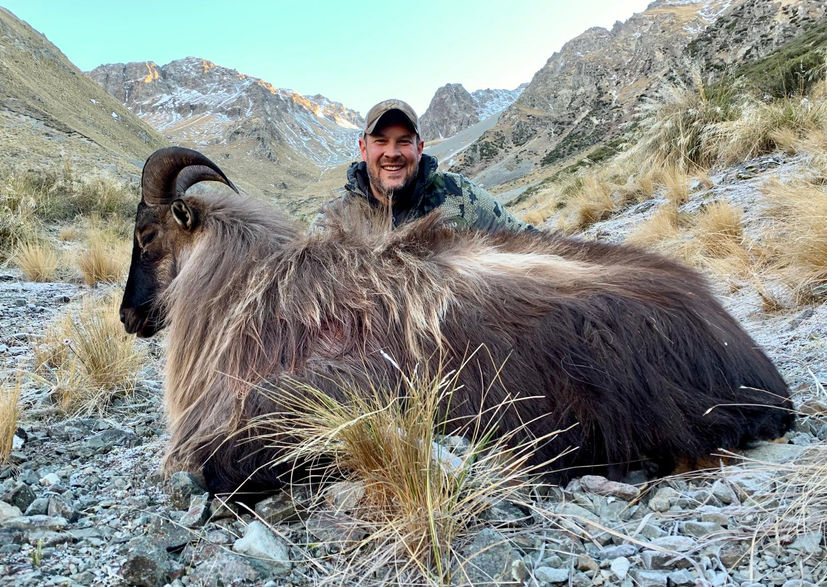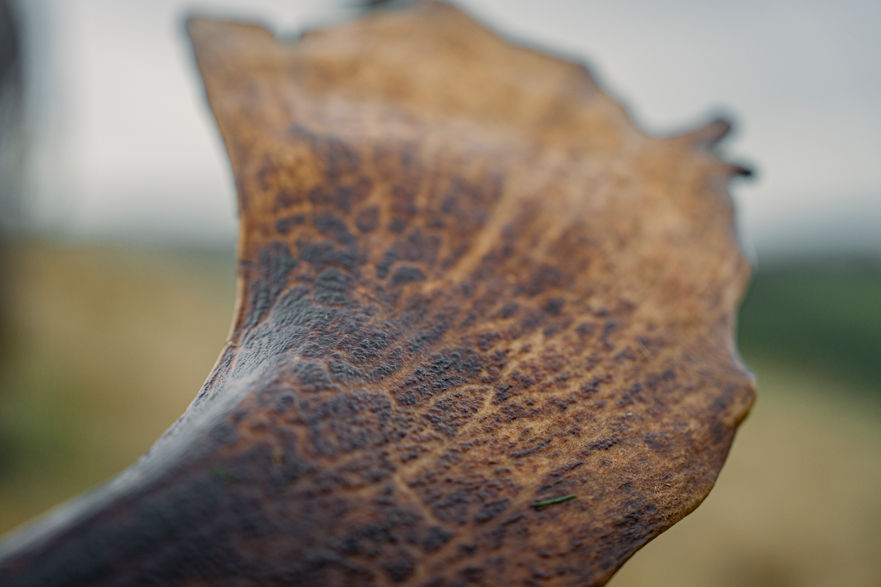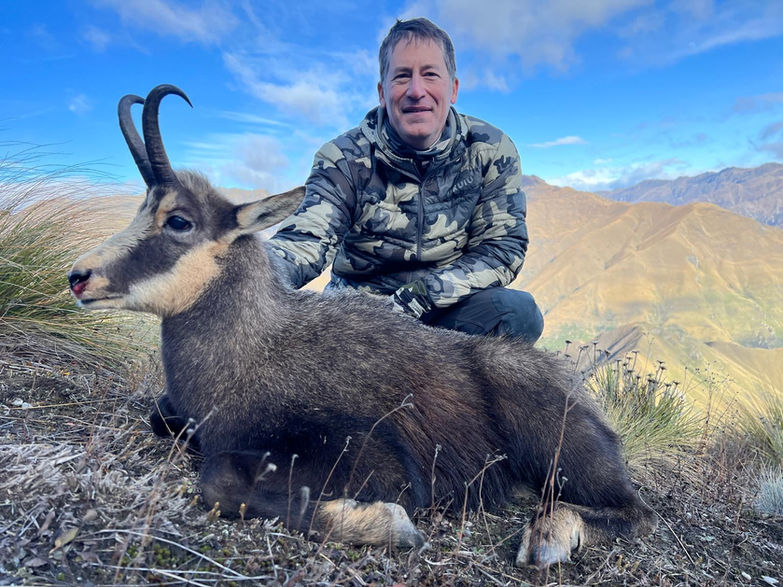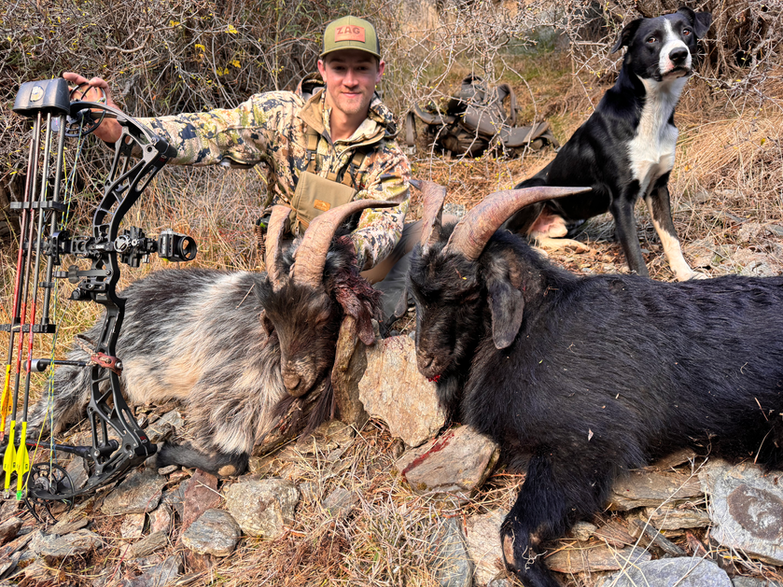

HUNTING NEW ZEALAND
Why New Zealand?
This New Zealand getaway is the perfect opportunity for every type of hunter. Incredible trophy quality accompanied by luxurious lodging as well as some backcountry expedition style hunts, this adventure checks all of the boxes. Taking place on the South Island of New Zealand, you will have the chance to hunt three different areas for a plethora of game species. Whether you are coming alone or bringing the entire family, this destination is extremely safe and full of things for everyone to do.
Accommodations
The main lodge is located in the southern farmland area of the South Island and is roughly a four hour drive from Queenstown Airport where you will fly in to. The available hunting area here is 10,000 acres of private property that is considered to be moderate hill country. The valleys and hillsides are thickly forested with beech trees and silver ferns, while the ridge tops are wide open with grasses and tussocks that the animals feed in during the early and late times of the day. The majority of your hunting here will involve spot and stalk style hunting with a good road system throughout the property that helps with maneuvering the deep valley and ridge systems and can help you get closer to the game before the final stalk. All rooms are beyond fully furnished, meals are top notch and trophy care is second to none. Animals available at the main lodge include Red Stag, Fallow Deer and Arapawa Ram. The genetics of the Red Stag alone bring guests from all over the world, topped with elusive trophy fallow deer. The special thing about these animals is that every single one is very unique in it's horn configuration, there are no two alike.
The Chamois Camp is about a two hour drive from the main lodge and is nestled into the outskirts of a beautiful tourist town that gives families the availability to go sightseeing, shopping, wine tasting, skiing, fishing and more. The chamois are one of the most difficult animals to hunt here because of where they live and how keen their senses are. This is usually a backpack style hunt that requires an arduous hike into the areas that they live. Many guests prefer to take a helicopter into the hunting area so that their legs are fresh and ready to go.
The Tahr Camp is a 30,000 acre piece of private land that is only accessible by helicopter as you fly from a nearby town through the mountainous terrain that you will be hunting. You will not have to worry about hunting competition or lack of animals here as you will be the only people on the mountain for miles. It is not uncommon to be looking at 30+ different bull tahr in a single day, trying to find the oldest and most unique bull. The mountain lodge here is one of the finest considering it's location, with all of the amenities found in a typical home you will be one of very few people hunting tahr from a base camp like this.
Daily Rates + Possible Add-ons
-
Daily Rates include guiding services, field preparation of animals, meals, accommodations and transportation
Extras | Price in USD |
|---|---|
Fishing | POA |
Duck Hunting | POA |
Helicopter Shuttle | POA |
Rifle and Ammo | $200 |
Bow Hunter Additional | $150 |
Day Tours + Sightseeing | $500 |
Non-hunter (per night) | $250 |
Extra Hunting Days (per night) | $450 |
What You Need to Know
1. Planning Your Trip - Here are a few things you need to get ready before you leave
Visas
Entering New Zealand is usually quite easy and the security personnel in the airport make the process easy and enjoyable. I always tell my hunters to apply for a travel visa to get into the country at least two months before your departure date. This will ensure that the process goes smoothly. You can do this by downloading the NZeTA app on your smartphone and following the steps to complete the process.
Firearms Permit
If you choose to bring your own weapon, you must apply for a temporary firearms license online through the New Zealand police. The deadline to complete this permit is at least two months before your departure. The outfitter will assist you with this step, but the information can also be found if you click this star. I would highly recommend to use a rifle from our outfitter, which does not require any paperwork.
Clean Equipment
New Zealand is very keen on keeping invasive species and foreign organic material out of their country (as they should be), so carefully wash your boots, clothing, equipment and any other gear that may have organic material from where you came from.
2. Arrival to New Zealand
After you collect all of your luggage, if you brought your own rifle you will have to declare it to customs, who will connect you with the New Zealand Police. They will check your passport and other paperwork, collect the $25 license application fee (you will have to change currency in the arrivals area since this fee must be paid in New Zealand currency), and issue your firearms permit and import license. I would highly recommend to use a rifle from our outfitter, which does not require any paperwork.
3. Hunting in New Zealand
All of the huntable big game species found in the New Zealand Landscape are actually invasive species. All of these animals were introduced and can cause serious damage to the native flora and fauna, so the government of New Zealand allows hunters to harvest as many animals as they wish to with no tags involved. If you wished to hunt fifteen red stags during your visit, the only person you will have to clear that with is the outfitter. Due to some of the desired big game species living in extremely rough terrain, our outfitter will allow hunters to be brought to the top of the mountain by helicopter and continue the hunt on foot. There are no regulations on same day hunting after being in the air. However, if you wish to hunt everything completely on foot, this is encouraged as well.
4. Leaving New Zealand
Trophy Transportation
At the end of your hunt, you will bring your animals to the taxidermist in New Zealand to prepare them for export and an importer in the United States will have to be used to get your trophies through customs in the USA. I would recommend having this set up before departure for your trip. Another option is to have your animals mounted in New Zealand by the experienced taxidermist used by the outfitter, but it will still be necessary to have an importer to get them back home.
Species Available
Red Stag
Red Stag are the main attraction to most who go to New Zealand. This property has some of the best stag genetics in the entire world. These animals are not given any growth hormones/steroids to get to this size, but quality herd management and superb feed are what separates this property from others. The Stags are typically hunted by spot and stalk with either a rifle or a bow, but archery hunters have higher success rates during the rut, also known as "The Roar," because the animals will be vocalizing and coming to calls during that time of year.
-
Available hunting dates: February - August
-
Red Stag Rut (Best Time to Hunt): March - April
-
Hunting Methods: Spot & Stalk / Calling
-
Weapon Choice: Any Legal Weapon
Red Stag Package Pricing
-
Stag packages include trophy fees and daily rates for one hunter
-
Each price listed below includes 4 nights at the lodge, additional nights not included
SCI Score | Price in USD |
|---|---|
500+ SCI | POA |
481 to 500 SCI | POA |
451 to 480 SCI | POA |
421 to 450 SCI | POA |
401 to 420 SCI | $14,000 |
381 to 400 SCI | $12,000 |
361 to 380 SCI | $10,000 |
341 to 360 SCI | $8,000 |
300 to 340 SCI | $6,000 |
Himalayan Tahr
Tahr are a species of goat that are native to India and Nepal. The species was brought to New Zealand in the time of European settlement solely for sport. They live in the alpine grasslands typically in high elevations and are incredibly agile in cliffy terrain. A bull tahr will have a shorter reddish coat in the summer and will grow a beautifully long coat in the fall and winter months as the cold temperatures and the rut creep in. Nannies will be much smaller than the bulls and will blend in almost perfectly with the grasses that they live in. They also prove to make stalking very difficult because of how hard it is to see them as they seem to show up out of nowhere.
-
Available hunting dates: All Year
-
Tahr Rut (Best Time to Hunt): April - July (Their capes are the most filled out as well)
-
Hunting Methods: Spot & Stalk
-
Weapon Choice: Any Legal Weapon
Himalayan Tahr Prices
-
Tahr prices do not include helicopter transport to get into private hunting area. This will typically be $2,000 to $5,000 extra.
-
Daily rates apply if you desire to only hunt Himalayan Tahr on your trip
Quality | Pricing in USD |
|---|---|
Trophy | $6,500 |
Fallow Deer
Fallow were among the first to be successfully introduced to New Zealand, being native to parts of Europe and Asia. They are special in that they can have four very unique coat colors, which some hunters are drawn to harvest one of each color; black, light red, white, and a paler light red color that does not turn dark in the winter months. Similar to stags, fallow can grow very unique antlers configurations with unique points and paddle sizes. This is a common animal to add on to the end of a hunt after a stag has been harvested, and is some of the best table fair.
-
Available hunting dates: March - September
-
Fallow Rut (Best Time to Hunt): April
-
Hunting Methods: Spot & Stalk
-
Weapon Choice: Any Legal Weapon
Fallow Deer Prices
-
Daily rates apply if you desire to only hunt fallow deer on your trip
Quality | Pricing in USD |
|---|---|
Super Platinum | POA |
Platinum | $6,500 |
Gold | $4,500 |
Silver | $2,500 |
Alpine Chamois
Chamois are a small species of mountain antelope native to Europe, Turkey and Caucasus. This is often the hardest species to tell males and females apart because they both have similar sized horns and bodies, though males will have horns that are thicker at the bases and have a much more pronounced hook at the end of the horn. These animals live in the roughest country of them all and require a hunter to have good optics to pick them out of the rocks and ledges that they live in.
-
Available hunting dates: All Year
-
Chamois Rut (Best Time to Hunt): April - July (Their capes are also the best this time of year)
-
Hunting Methods: Spot & Stalk
-
Weapon Choice: Any Legal Weapon
Alpine Chamois Prices
-
Daily rates apply if you desire to only hunt chamois on your trip
Quality | Pricing in USD |
|---|---|
Trophy | $5,500 |
Arapawa Ram
Arapawa Sheep were introduced in the mid 1800's and are descendants of domesticated sheep that became very wild over the years. Originally used as a food source, they became a species appealing to hunters because of their beautiful horns and thick wool coat. The horns will sometimes reach two full curls. This is another species that is commonly added on either before or after a hunter harvests another animal.
-
Available hunting dates: All Year
-
Best Time to Hunt: February - October
-
Hunting Methods: Spot & Stalk
-
Weapon Choice: Any Legal Weapon
Arapawa Ram Prices
-
Daily rates apply if you desire to only hunt Arapawa Ram on your trip
Quality | Pricing in USD |
|---|---|
Trophy | $1,500 |
South Pacific Goat
These goats are often overlooked by most of the other species, but prove to be just as difficult to hunt. They live in typical mountainous goat country and are very good at maneuvering that terrain. Their senses are sharp and can be difficult to get close to. It is a mixture of wild and domestic breeds and can sport several very unique coat variations. Their horns typically have one and a half curls, but have been harvested with up to three full curls.
-
Available hunting dates: All Year
-
Best Time to Hunt: All Year
-
Hunting Methods: Spot & Stalk
-
Weapon Choice: Any Legal Weapon
South Pacific Goat Prices
-
Daily rates apply if you desire to only hunt South Pacific Goat on your trip
Quality | Pricing in USD |
|---|---|
Trophy | $1,500 |
New Zealand Trout Fishing
World renowned for the world class trout fishing, this is a spectacular opportunity to add onto the tail end of your trip if you are an angler. The rivers and streams in New Zealand are home to some very large Brown and Rainbow trout. The crystal clear water allows for anglers to do a lot of sight fishing and just adds to the beauty of this land in itself. A lot of anglers have a hard time traveling so far just to fish, so if you are more focused on fishing than hunting, this is also a great opportunity to do a little bit of both!
-
Available fishing dates: October to April
-
Best Time to Fish: March to May
-
Fishing Methods: Spinning Rod and Fly Fishing
Trout Fishing Prices
-
We will consult with the outfitter to get you a price depending on your hunting situation






